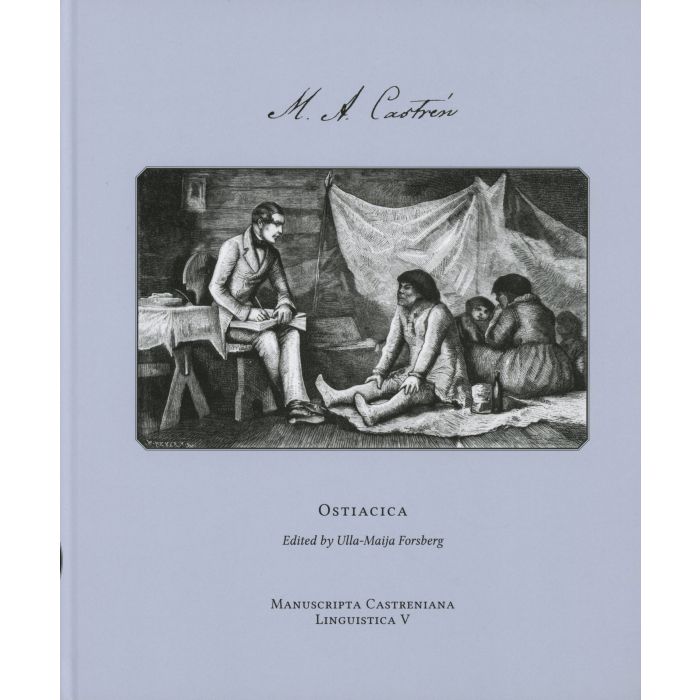Vi använder cookies för att göra din upplevelse bättre. För att följa det nya direktivet om e-integritet, behöver vi be om ditt medgivande att sätta cookies. Läs mer.
Ostiacica
50,00 €
I lager
SKU
978-952-7262-00-9
Castrén, Matthias Alexander
Ostiacica
Ed. Ulla-Maija Forsberg
Suomalais-Ugrilainen Seura
Manuscripta Castreniana: Linguistica
Helsinki 2018, 175 p.
Ostiacica
Ed. Ulla-Maija Forsberg
Suomalais-Ugrilainen Seura
Manuscripta Castreniana: Linguistica
Helsinki 2018, 175 p.
Matthias Alexander Castrén (1813-1852) was by far the most significant Finnish linguist of the 19th century. In addition to being a linguist he was also a multidisciplinary scholar, equally versatile in the fields of ethnography, folklore, mythology, archaeology, history, and human geography. He left behind a huge corpus of field data, collected by himself during prolonged expeditions to Karelia, Lapland, Arctic Russia, and Siberia between 1838 and 1849. During the short periods of time Castrén spent in an academic environment, he had little opportunity to synthesize his collections, a situation aggravated by his rapidly progressing and ultimately fatal illness. Therefore, a major part of his scholarly heritage remained unpublished when he died.
The Khanty grammar is one of the few materials Castrén was able to publish himself. He collected the material over the course of a few weeks in the summer of 1845 in the Irtys and Surgut areas, where the southern and eastern dialects of Khanty were spoken. During these weeks, he outlined the Khanty grammar in Swedish and his companion Johan Reinhold Bergstadi translated it into German. After Castrén returned from his journey in 1849, he was able to check the German translation and oversee the printing of the book.
In this critical edition, most of the commentary is made based on the printed book, which is here translated into English. There are only minor comments on the differences between the printed version and the manuscript, as Castrén seemingly had control over the printing process, and thus the printed version can be regarded as his own synthesis of the grammatical and lexical notes. The commentaries are made on the basis of best modern knowledge of Khanty. In this volume, a brief modern grammar of Khanty is also presented, focusing on the lrtys and Surgut dialects.
The Khanty grammar is one of the few materials Castrén was able to publish himself. He collected the material over the course of a few weeks in the summer of 1845 in the Irtys and Surgut areas, where the southern and eastern dialects of Khanty were spoken. During these weeks, he outlined the Khanty grammar in Swedish and his companion Johan Reinhold Bergstadi translated it into German. After Castrén returned from his journey in 1849, he was able to check the German translation and oversee the printing of the book.
In this critical edition, most of the commentary is made based on the printed book, which is here translated into English. There are only minor comments on the differences between the printed version and the manuscript, as Castrén seemingly had control over the printing process, and thus the printed version can be regarded as his own synthesis of the grammatical and lexical notes. The commentaries are made on the basis of best modern knowledge of Khanty. In this volume, a brief modern grammar of Khanty is also presented, focusing on the lrtys and Surgut dialects.
| Förläggare | Finsk-Ugriska Sällskapet |
|---|---|
| ISBN | 978-952-7262-00-9 |
| ISSN | 2489-4397 |
| Publikationsserie | Manuscripta Castreniana: Linguistica |
| Tryckt (år) | 2018 |
| Publikationens omslag | Hård pärm |
| Bandtyp | Inbunden |
| Språk | engelska |
| Vetenskapsgrenar | Språkforskning |


